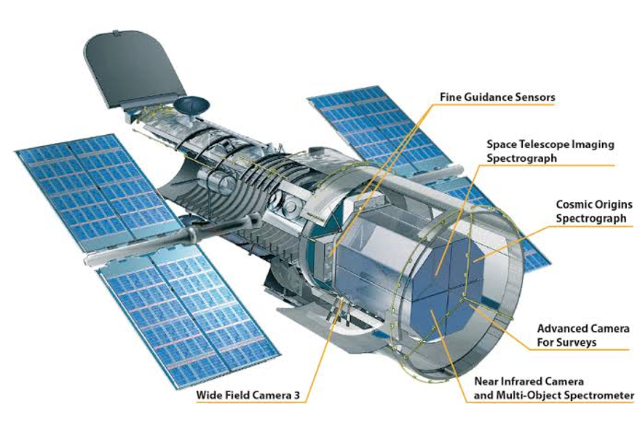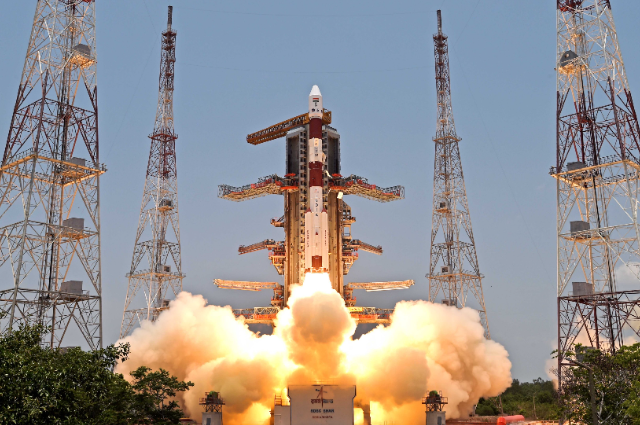I. INTRODUCTION
India’s space program has gained international acclaim for its remarkable achievements, making it a prominent player in the realm of space exploration. This essay provides a brief overview of India’s space endeavors, focusing on its missions to study the sun. delving into the significance of these missions, it becomes evident that unraveling the mysteries of our nearest star holds profound implications for both scientific knowledge and practical applications on Earth.
India’s Sun Mission is a groundbreaking endeavor with far-reaching implications for science and technology.
II. HISTORICAL CONTEXT
India’s journey in space exploration has been a remarkable testament to scientific prowess and determination. The roots to India’s space program can be traced back to 1969 when the Indian Space Research Organization (ISRO) was founded. Under the leadership of Dr. Vikram Sarabhai, ISRO embarked on a journey that would eventually lead to groundbreaking achievements. India’s space endeavors gained international recognition with the successful launch of Aryabhata, its first satellite, in 1975. These successes underscored India’s growing capabilities in space exploration and marked significant milestones in the country’s scientific and technological history.
Dating back to the mid-20th century, during the height of the Space Race, with the launch of the first artificial satellites and human spaceflights, it became evident that a comprehensive understanding of the Sun’s behavior and its influence on the solar system was crucial. Solar missions, such as the groundbreaking Paker Solar Probe launched in 2018, have provided critical insights into the solar wind, solar flares, and the Sun’s magnetic fields, enhancing our ability to forecast space weather and protect both astronauts and spacecraft.
III. THE SUN MISSION: OBJECTIVES AND GOALS
The primary objectives and scientific goals of the Sun mission revolve around a comprehensive exploration of solar dynamics. The mission aims to delve deep into the heart of our sun, unraveling its enigmatic processes and phenomena. By doing so, it seeks to enhance our understanding of the sun’s inner workings, shedding light on critical aspects such as solar flares, coronal mass ejections, and magnetic fields. Through meticulous observations and data collection, this mission endeavors to decipher the intricate mechanisms governing the sun’s behavior, ultimately contributing to improved space weather forecasting, bolstering the protection of Earth’s technological infrastructure, and advancing our comprehension of the fundamental forces shaping our solar system.
To achieve this, scientists and engineers must collaborate tirelessly to devise novel solutions and push the boundaries of current aerospace technology. In doing so, they endeavor not only to unravel the mysteries of the Sun but also to pave the way for the future missions into the depths of our solar system and beyond.
IV. SOLAR OBSERVATORY: INSTRUMENTS AND TECHNOLOGY
The solar observatory, with its meticulous design and state-of-the-art technology, provides a comprehensive overview of the spacecraft and its instruments dedicated to solar observation. The spacecraft’s design is a marvel of engineering, featuring advanced materials and configurations that enable its precise positioning and stability in the harsh solar environment. Onboard, the observatory boasts a suite of key instruments, each tailored to capture specific aspects of our dynamic sun. these instruments include spectrographs, coronagraphs, and magnetometers, all meticulously calibrated to unveil the intricate phenomena occurring on the solar surface, within its atmosphere, and in the surrounding space. Together, they empower scientists to deepen their understanding of solar activity, space weather, and the sun’s profound influence on our solar system.

Designing and constructing a solar observatory presents a myriad of intricate challenges. Firstly, ensuring the observatory’s structural integrity in the harsh environment of space is paramount. Secondly, the observatory’s precision instruments must be meticulously crafted to capture the intricate details of sun’s dynamic behavior. Overcoming these hurdles demands collaboration across various scientific disciplines, technological innovation, and a relentless commitment to advancing our understanding of the sun’s profound impact on our solar system and Earth’s climate.
V. INTERNATIONAL COLLABORATION
International collaboration is pivotal to advancing our understanding of the cosmos and enhancing our technological capabilities. By fostering partnerships with other countries and space agencies, we create a platform for shared expertise, we create a platform for shared expertise and resources. These collaborations offer a rich tapestry of collaborative scientific research opportunities, enabling us to tackle complex questions about the universe, develop cutting-edge technologies, and promote the peaceful exploration of space. Through these interconnected efforts, we strive to push the boundaries of human knowledge and pave the way for a brighter future in space exploration and scientific discovery.
In an era where space has become a new frontier, international collaboration remains the linchpin that propels us towards a future where we explore the cosmos, unlocking its mysteries and expanding our horizons together.
VI. SCIENTIFIC DISCOVERIES AND IMPLICATIONS
The mission focused on exploring solar phenomena promises to yield groundbreaking discoveries with far-reaching implications for our understanding of space weather. By studying the Sun’s intricate processes, scientists have the potential to unlock critical insights into the mechanisms driving solar flares, coronal mass ejections, and solar wind variability. Such discoveries could enable us to better predict and mitigate the impacts of space weather on Earth’s technology-dependent systems, including satellite communications and power grids.
The practical applications of the mission’s findings have ushered in a new era of scientific exploration and technological advancement. From the discovery of novel exoplanets to the identification of potential sources of renewable energy on distant celestial bodies, these findings have profound implications for our understanding of the universe and its potential benefits for humanity.
VII. TECHNOLOGICAL ADVANCEMENTS
The successful completion of this ambitious space mission has had a profound impact on India’s space technology capabilities. It has not only showcased the nation’s prowess in space exploration but also catalyzed the development of cutting-edge technologies with vast potential applications on Earth.
The innovative solutions devised for the mission, from advanced propulsion systems to robust communication networks, have not only expanded India’s prowess in the cosmos but also ushered in a new era of technological innovation with spin-off benefits across various domains. These advancements hold promise for revolutionizing telecommunications, remote sensing, disaster management, and sustainable resource utilization, among others, ultimately benefiting humanity as a whole.
VIII. CHALLENGES AND RISKS
Launching and operating a solar observatory presents a myriad of potential challenges and risks. First and foremost, the extreme conditions of space, including intense radiation and temperature fluctuations, pose significant operational challenges. Furthermore, the risk of technical failures during launch or in orbit could jeopardize the entire mission’s success. Addressing these multifaceted challenges and mitigating associated risks will be crucial for the successful execution of this ambitious solar observation mission.
The successful deployment of mitigation strategies and contingency plans necessitates meticulous planning, constant vigilance, and the agility to adapt swiftly to unforeseen challenges.
IX. CONCLUSION
India’s sun mission has not only showcased the nation’s remarkable scientific and technological prowess but has also underscored its unwavering commitment to advancing our understanding of the universe. These missions, such as the highly successful Mangalyaan and Chandrayaan programs, have not only yielded invaluable data about the sun but have also spurred innovation and technological advancement within the country. As we look to the future, India’s continued dedication to sun missions promises to yield groundbreaking discoveries that will not only benefit the scientific community but also inspire generations to come, showcasing the nation’s bright potential on the world stage.
As the mission continues to unravel the mysteries of our solar system and beyond, it shines as a beacon of inspiration for future generations, propelling India’s trajectory as a significant player in the grand cosmic odyssey.

